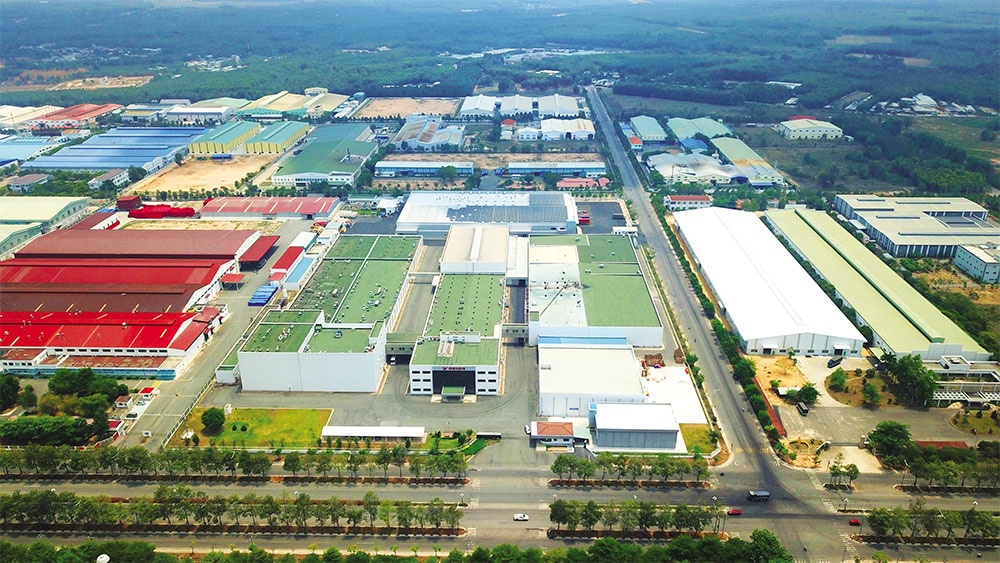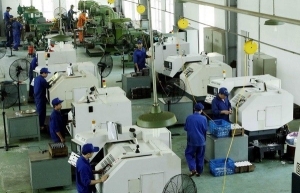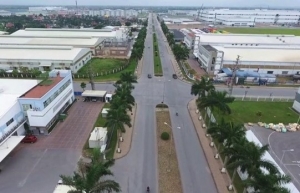Developers desiring simplified IZ creation
At a forum on implementing Decree No.35/2022/ND-CP on the management of industrial and economic zones (IZ/EZ), held on August 26 in Hanoi, Hoang Quang Phong, vice chairman of the Vietnam Chamber of Commerce and Industry, said that the decree is considered to be a breakthrough legal framework, but it has many problems that would need to be tackled in implementation.
Specifically, Decree 35 has progressive amendments compared to the previous decree, such as clarifying different types of zoning plans and pointing out cases which do not need these plans.
In addition, Decree 35 also promotes decentralisation for local authorities. Approaching the one-stop and on-site mechanism, the management units of industrial and economic zones are assigned specific tasks and authorised for detailed works.
However, Decree 35 still has a number of points that are not consistent, leading to arbitrary implementation, causing confusion for management agencies in inspecting and supervising and difficulties for investors in project implementation.
 |
| Developers desiring simplified IZ creation - illustration photo |
Cumbersome clauses
Explaining more about the shortcomings of this decree from an investor’s perspective, Tran Anh Vuong, general director of Western Pacific and vice chairman of the Vietnam Young Entrepreneurs Association, said that Decree 35 mentions the investment divergence and is one of the difficulties for developers.
Accordingly, Clause 4, Article 8 of Decree 35 stipulates that the divergence is not only implemented in a certain project but it must be done for the whole process, from investment policy to investment approval and to the site.
“When I build a 250ha industrial zone, I will have to submit the dossier twice for investment appproval, twice for investor selection, and twice for site clearance. This is too cumbersome and complicated and causes difficulties for any investor,” said Vuong.
According to Tran Thi Thanh Hao, head of Legal at BW Industrial Development JSC, articles 9.4 and 27.2 of Decree 35 provide requirements with regard to available land and incentives for small- and medium-sized enterprises (SMEs) entitled to investment incentives under the Law on Investment.
Accordingly, a developer of an IZ must reserve 3 per cent of the total area, or at least 5 hectares, for SMEs, and the rental and infrastructure fee applicable to SMEs that sub-lease land in the area must not exceed 70 per cent of the rental and infrastructure fee applied by the developer at the time of sub-lease.
“We believe is considered a good incentive for SMEs. However, it may not be feasible because most may not be financially capable of sub-leasing and building their own business facilities in IZs. Instead, they would normally lease ready-built facilities from sub-developers like BW, who develop ready-built facilities for lease, to reduce the cash flow burden for those businesses,” Hao said.
Therefore, she added, it would be more practical for IZ developers to lease such reserved areas to capable sub-developers at the above incentive rate, who will then develop ready-built facilities and lease those facilities to SMEs at an incentive rate.
“This model would be beneficial to all relevant stakeholders and help the above provisions of Decree 35 to be implemented in practice,” Hao cited.
Nguyen Thi Thu, general director of Anh Kim Food Production JSC, said that some regulations in Decree 35 are still vague, such as the procedures for implementing the one-stop-shop mechanism, confusing businesses.
In addition, Thu said, although the procedures for licensing IZs and EZs have been simplified, there are still certain barriers, especially the progress of compensation for site clearance remains slow due to the increase in compensation costs. “This has slowed down the construction progress, affecting the profit margin in newly established IZs, which can decrease by 30-35 per cent compared to existing zones,” Thu said.
Along with that, businesses are also concerned about the regulations on establishing industrial-urban-service zones in Decree 35. In order for this 3-in-1 model to be reliable, it is necessary to build separate regulations in addition to the Law onousing and the Law on Real Estate Business, to directly regulates planning issues and administrative procedures.
Completing the legal system
Experts and businesses recommend that it is necessary to improve the legal framework for the management of IZs and EZs to match the current situation and create favourable conditions for state agencies in inspection and supervision, as well as for investors to implement their projects.
Lawyer Tran Dai Nghia, CEO of FII Vietnam Investment and Consulting Co. said, “In order to put the decree into practice, it is necessary to continuously make adjustments, supplements, and improvements in the relevant legal system. There also should be synchronous coordination of ministries, branches, and localities to create a premise for the sustainable development of IZs.”
Dr. Han Minh Cuong, a representative of Sgroup Corporation, said when national, regional, and provincial plans are being established for the 2021-2030 period, it is necessary to have exact forecasts for the development demand of IZs.
“Based on this forecast, we can determine the correct target of every IZ, reasonable planning of their locations, and sizes to gain a sustainable development,” Cuong said.
According to the Ministry of Planning and Investment, as of June, there are 335 IZs nationwide, with a total land area of nearly 100,000ha. IZs and EZs across the country have attracted more than 9,800 foreign-invested projects with a total registered capital sum of more than $194 billion and 1,400 domestic investment projects with a total value of $60.8 million.
 | M&A heating up in industrial real estate Implementing merger and acquisition deals is an opportunity for real estate developers and partners to team up to develop large-scale and high-quality industrial zones. |
 | Developers struggle with regulations to build worker homes Despite accommodation for workers in industrial zones being an urgent requirement, a series of developers will struggle to build enough, both in and outside such areas, due to tough regulations. |
 | Dynamic regions at heart of planning Along with the increase in total factor productivity, creating economic dynamic regions with true spillover effects will be the poles that hold up investment and generate outstanding growth. |
What the stars mean:
★ Poor ★ ★ Promising ★★★ Good ★★★★ Very good ★★★★★ Exceptional
Related Contents
Latest News
More News
- JustCo expands business into Vietnam (December 22, 2025 | 17:58)
- Sun Group breaks ground on $2 billion Van Don casino complex (December 19, 2025 | 18:14)
- Rare, beautiful, sustainable: the mark of iconic real estate (December 19, 2025 | 08:00)
- Owner-occupied housing stabilises, paving the way for new growth cycle (December 18, 2025 | 17:04)
- Unlocking urban potential of smart cities (December 18, 2025 | 16:50)
- Green finance offers 'passport' for Vietnamese construction, building materials firms (December 15, 2025 | 08:00)
- Gamuda Land commit long-term investment (December 12, 2025 | 11:49)
- HITC ties up with Evolution to develop AI and hyperscale data centres in Vietnam (December 11, 2025 | 12:09)
- Real estate deals boom via high-profile names (December 08, 2025 | 11:32)
- Industrial segment shaped by M&As (December 08, 2025 | 08:00)

 Tag:
Tag:





















 Mobile Version
Mobile Version